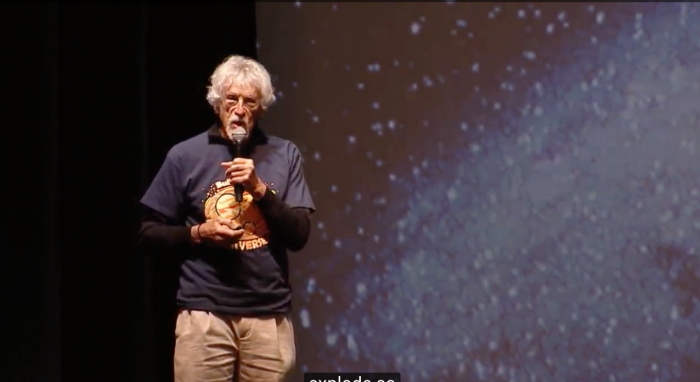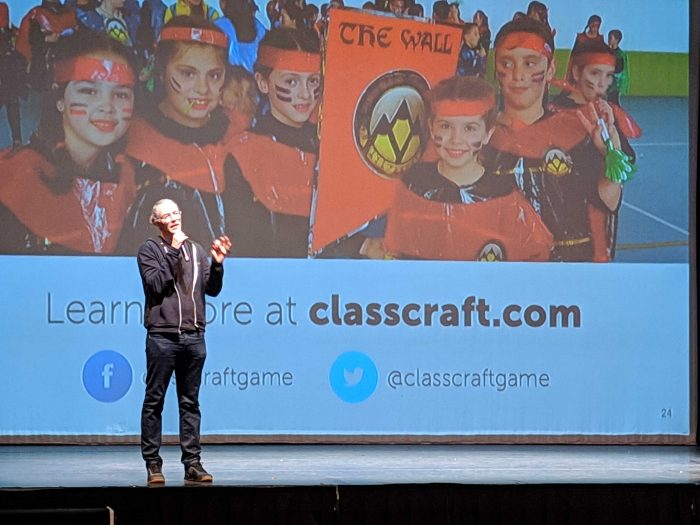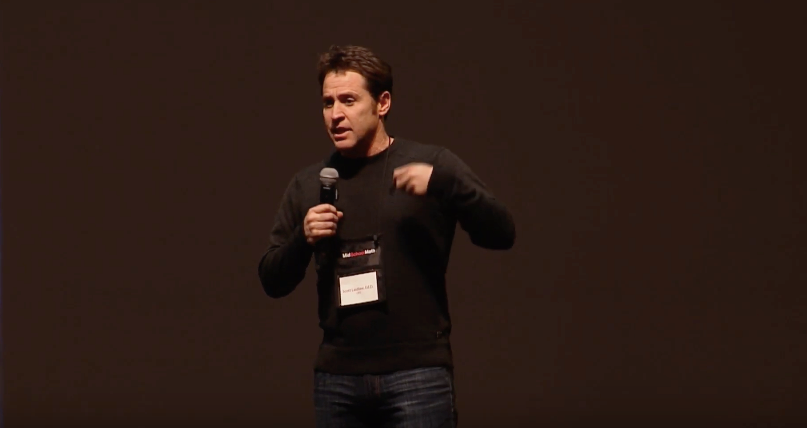Every year, the ED Games Expo showcases a range of learning games and technologies that make learning fun while helping kids and adults to master skills and sharpen critical-thinking and problem-solving skills.
During the sixth edition of the expo in Washington, D.C. on Tuesday, local students and their teachers play-tested 130 learning games and tech while meeting and interacting with their developers at the John F. Kennedy Center for the Performing Arts.
Organized in collaboration between the Department of Education’s (ED) Institute of Education Sciences (IES) and the Kennedy Center’s Education team, the 2019 event kicked off on Monday with a TED-talk style presentation from seven of the world’s leading learning game developers. The “How the Game Was Made” sessions gave students the opportunity to explore the process of game creation and discover how science, math, engineering, reading, writing, and the arts influence game development and design.
Here’s a recap of this year’s presenting developers sharing their stories and knowledge.
Teachley, Kara Carpenter
Former teacher turned developer, Kara Carpenter creates adaptive math games through Teachley. Her game, Teachley Fractions Boost, helps kids learn fractions using a racing spaceship.
The game is based on educational research that promotes the number line, instead of parts of a circle, as a better way to teach fractions. Players direct a spaceship racing on a course toward a number line. They have to tap the screen a directed number of times to point their ship to the correct point.
“We really thought, how can we get the kids to understand the meaning of the denominator, which is how many pieces you’re dividing [the whole] into, and the numerator on top is sort of where you need to go. Some of the things we found is that by making the meaning of both of those numbers really explicit, we saw huge gains in terms of students ability to understand fractions on a number line.”
Besides making it easier to learn fractions, Carpenter said this type of math education gives students a leg up in junior high and high school math.

7 Generation Games, Maria Burns Ortiz
Presenting for the fifth consecutive year, Maria Burns Ortiz of 7 Generation Games broke down the many elements that go into a game’s creation. Comparing game development to the human body, Burns Ortiz detailed every step — from doing research (the bones) to checking for bugs (the immune system) — taken by her team to create math games like Aztech: The Story Begins.
During the Q&A, Burns Ortiz was asked by a young student where her ideas came from:
“We use history as our storyline because we think math when you teach it shouldn’t just be about [numbers] but how can we make that part of a story. We thought, where do you get really good stories that are educationally interesting? And we found history was full of them.
“So, that’s where we get our ideas from. But we get a lot of ideas from kids too. We talk to kids over and over. Because sometimes your idea that you think is great isn’t, and when kids start playing your game you get a lot of great ideas.”

PBS Kids, Shannon Bishop and Nita Mandar
Shannon Bishop and Nita Mandar from PBS Kids introduced the game, Ready Jet Go! and the team of more than 40 people involved in its creation. Based on the television show of the same name and currently in development with an expected release in April, the game gives players the ability to build and control virtual robots as they explore planets.
To encourage students to think about the passions and hobbies they have and how they could apply them to game design, Bishop and Mandar broke down the game’s creation into eight steps:
- Imaging and plan – “If you like to doodle, imagine, tell stories, collaborate, or brainstorm, this may be a part of game making that you’d really love,” said Mandar. This area also relies on flexible thinking as a creative problem-solving skill.
- Design and doodle – Bishop drilled down into the design phase, explaining how games from PBS have to look like the characters from their respective shows. At this phase, animators, illustrators, and designers have to think about what a game looks like and its appearance across devices.
- Prototype – In this basic stage, the mechanics of the game and functionalities are tested, calling on logic and problem-solving skills.
- Playtest – The “really, really fun part” but also very crucial stage has kids play the game and provide feedback for improvement.
- Improve – The results from the playtest are shared with the game team, who use the information to make the game even better.
- Alpha – In this phase, the game flow and adaptability are explored, and the game’s features are tweaked.
- QA – In the quality assurance testing stage, the game is taken and played across devices to check for bugs.
- Launch! – The final phase is to get the game out there on websites and devices and to share the word.

The Beamer, Peter Solomon
“We are made of stardust that was once in the body of Albert Einstein and the last T-Rex,” Peter Solomon declared as he introduced students to his interactive video game, The Stardust Mystery. The game started as a science time-travel adventure story inspired by the birth of his twelfth grandchild.
Solomon, who has a Ph.D. in physics, wanted to teach kids about the history of science. He created The Beamer to make physics and science education fun.
In The Stardust Mystery, players adventure as crew members of the Cosmic Egg, a virtual time, space, and size-change travel ship. Playing through different episodes, they explore the Big Bang, discover dinosaurs up close, tour their own bodies, and shrink to the size of atoms.
The first episode, Mission KT, will be released in March 2019 on Steam with an eventual release through the Microsoft Store and Amazon. Two other episodes — Mission Big Bang and Building the Universe — are in development along with accompanying books.

Classcraft, Devin Young
“The reason we do this is because school wasn’t fun for us,” said Devin Young as he shared the inspiration for Classcraft. “I had a hard time in school, found it a bit boring, got picked on a bit, and we started thinking about how school could be better if we turned the experience into a game.”
The online program, which can be used for many purposes such as classroom management and personalized learning, gives students a character they play in a team throughout the school year. They gain points for positive behavior — like completing homework or working well with others — that they can use to level up their characters, unlock special privileges in class, and get new equipment and pets.
Young shared insights on the skills, such as critical-thinking and problem-solving, that the company’s teams need to bring Classcraft from the idea stage to classrooms around the world.
In closing, Young encouraged students to look at what they are hooked on — drawing, talking to people, programming — and see how their interests could be turned into a career in game development.

MidSchoolMath, Scott Laidlaw
A teacher for 15 years, Scott Laidlaw set out to make math more interesting by putting it into the context of a history game. The result was the game Empires.
“Math can be boring sometimes,” said Laidlaw. “We’re trying to transform how we teach it.”
Set in Ancient Mesopotamia during the Neolithic Era, at the brink of the agricultural revolution and the beginning of trade economies, Empires invites students into an epic civilization story, with characters, a plot, and individual empires they can manage.
Empires was released in 2015 under MidSchoolMath, which creates engaging online games and curriculum for middle schools.
Laidlaw left students with the three most important steps involved in creating a game: Start with a simple idea, build a good team, and secure funding.

Second Avenue Learning, Tory Van Voorhis
Inspired by seeing her students bored in class, Tory Van Voorhis created Second Avenue Learning as a platform to launch fun STEM games, like Martha Madison.
The Martha Madison game-based curriculum includes a series of games that give meaning to complex science concepts for middle school students. Available on Steam, the game has players solving real-world challenges that develop critical thinking, problem-solving, technology literacy, and adaptability. After 20 minutes of playing Martha, students can improve their learning outcomes by a full letter grade, according to Van Voorhis.
During the Q&A, Van Voorhis was asked by a student how long it takes to build a game.
“You can actually build a game in a week, a really simple little game. We built something like Angry Birds for one of our clients, and it was less than a week to develop, including the art.
“A game like [Martha] can take a couple of years to build. It really depends on how many hours of play and how much content you have, how complex the characters are, whether you are building it in HTML or Unity and how much testing you want to do.”

Watch the full simulcast replay below.


